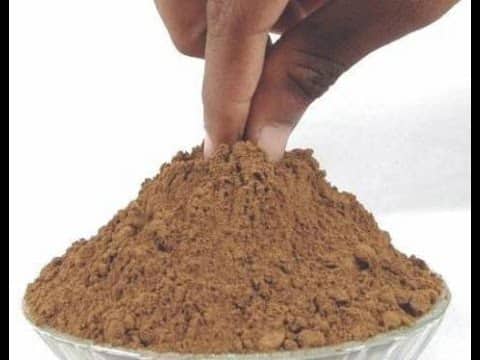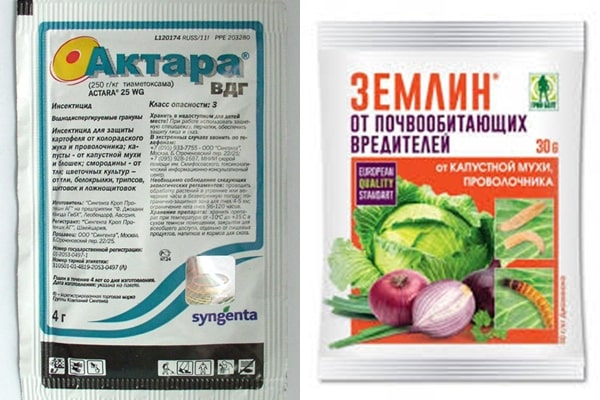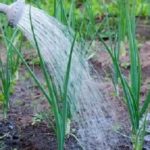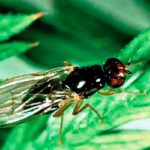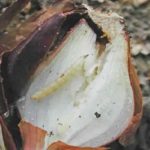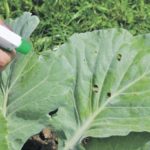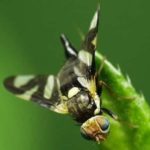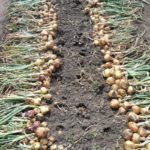When an onion fly appears, the appearance of the plant changes, in order not to lose the harvest, you need to know how to deal with it. Every gardener would do well to get acquainted with the description of the pest and the main reasons for its appearance in the garden.
Biological portrait
The onion fly is a widespread pest of vegetables. The larvae of these insects penetrate the bulb from the inside or from the bottom. The first generation larvae are especially dangerous. Damaged onions begin to wither and rot.
Appearance
The onion fly can easily be confused with a regular fly, a house fly, or a cabbage fly.It is important for vegetable growers to know what a fly looks like in order to begin fighting it in the early stages of its appearance. The onion fly is gray-yellow in color, with an average length of 7–8 mm. Vertical stripes can be seen on the wings.
The eggs that the insect lays are white, oval in shape, 1 mm in length with a longitudinal stripe in the middle. Under favorable conditions, larvae begin to appear on the 4th day.
Transparent white larvae are small, about 1 mm. The back of the body is thicker than the front. After three weeks, the larva turns into an adult.
The flies themselves do not harm the plants, but they constantly lay new eggs. You need to be wary of the larvae that hatch from them. Control methods should be aimed at both adult insects and their larvae.
Reproduction
The onion fly begins to fly at the end of April with the onset of warm weather. At the same time, it begins to actively reproduce. Years take a fairly long period of time, about 50 days. Lays eggs directly in the soil or the remains of dry husks in the beds where onions or garlic grow. Less commonly, it lays eggs in the leaf axils and on the leaves themselves.
One adult insect can lay up to 60 eggs in its entire life. To lay eggs, the adult needs additional nutrition in the form of nectar and pollen from flowering plants.
Onion fly larvae, which emerge from eggs, stay in groups and are capable of destroying the entire inside of the onion. Easily gnawing through the peel of the turnip, they penetrate inside. After 3 weeks, the larvae burrow into the soil and pupate. And after another 2–3 weeks, a new, younger generation of pests appears.
A trace of rot on the bulb should be the reason to begin pest control.Carry out preventive treatment of healthy plants and therapeutic treatment of bulbs already infected with pests.
Signs of a pest presence
The larvae of adult insects suck out all the juices from the bulb and devour the pulp. After three weeks, the flies completely destroy the plant, burrow into the soil and pupate. She spends the whole winter in this state.
In the spring, the onion fly emerges from the cocoon weak, but capable of life. For a week she will feed on the nectar of dandelions or lilacs, and after another week she will reach sexual maturity. At this time, insects move to the onion beds.
The following signs will help you spot pests in a vegetable garden in time:
- The bulbs begin to rot and emit an unpleasant odor. In the section you can see the passages made by the larvae.
- The plant slows down in growth, the feathers begin to turn yellow, wither, and the tips curl inward.
- The bulb is easily pulled out of the soil with its roots; near the bottom you can see small worms, these are fly larvae.
After harvesting, you need to dig the ground deeply (to a depth of 20 cm). How can you treat soil infested with insect pests? The onion fly dies in a salty environment, so it is recommended to water the beds with a salt solution before planting the bulbs. The larvae die immediately.
How to get rid of onion fly?
If preventive methods do not help, and the fly still appears, you need to take decisive control measures. You can use folk remedies and chemicals to control the pest.
Folk recipes will help answer the question of how to effectively fight onion flies. It contains components that are found in every home and are absolutely safe for cultivated plants.
In the case when individuals have multiplied to a large number, chemicals must be used against the parasite. They should not be used too frequently, as pesticides accumulate in the head and cause harm to human health if consumed.
Folk remedies
Since onions quickly absorb insecticides, experts recommend using folk remedies for onion flies.
One of the proven and effective methods of combating onion flies is a solution containing kerosene. Before treating with kerosene, the soil is thoroughly watered with plain water. Then water the bed with the solution. For 10 liters of water take 30 ml of the substance.
Tobacco dust is used against pests. The solution is easy to prepare. You need to take 200 g of tobacco dust, which is diluted in 10 liters of hot water. To increase efficiency, add 30 g of soap (liquid or dry) to the composition. After this, the solution is left to infuse for 2–3 days. You can simply sprinkle tobacco dust on the garden bed. You can first mix it with lime.
If pests are found in onion beds, gardeners recommend watering them with saline solution. 300 g of salt are dissolved in a bucket of water. When watering, you need to make sure that the solution does not get on the feathers. After two weeks, watering is repeated, but with a more concentrated solution.
A mixture of ash with dry mustard, ground pepper or tobacco dust helps to cope with the problem. Treatment of beds with a similar composition should be carried out 3-4 times with an interval of 7-10 days.
Deep digging of the soil also helps to cope with the problem. Larvae that fall to the surface of the earth quickly die.
Chemical control
You can treat onions with ammonia. Three drops of iodine, a drop of potassium permanganate, 2.5 ml of boric acid and 30 ml of technical ammonia are dissolved in a bucket of water. You want the water to smell slightly like ammonia. It is recommended to water each affected bush with the resulting solution (about 250 ml of solution is consumed for each root).
It is advisable to treat with ammonia in the evening so that the soil retains moisture longer. It is better to water between the rows, avoiding direct contact with the roots.
After treatment, it is recommended to loosen the soil so that the smell further repels pests.
In critical situations, chemicals such as Aktara, Intavir, Metronidazole, Fitoverm, Kreolin, Zemlin will help save the crop.
Relatively recently, a solution based on Metronidazole has become popular among gardeners. For 10 liters of water, take 5-6 tablets, which must first be crushed to a powder. It is allowed to water with such a solution 1-2 times during the entire period of plant development. When watering, you should avoid getting the drug on the leaves.
Prevention
The first signs of the presence of a pest in the garden can be noticed already in the spring, when dandelions, cherries and lilacs begin to bloom. Flowers are simply necessary for the development of insects. The fly feeds on the nectar of these plants.
It is easier to prevent the appearance of a pest than to later look for ways to combat it.
Preventive protection against onion fly may include a number of the following actions:
- It is better to plant onions next to a carrot or tomato bed (flies cannot stand the smell of carrots and try not to lay eggs next to this vegetable);
- onions should be planted as early as possible;
- onions cannot be planted in the same place for several years in a row (pests successfully overwinter in the soil, burrowing into the remains of plants);
- It is recommended to mulch the soil (rotted manure, hay, peat can be used as mulch);
- planting material must be placed in a disinfecting solution (a weak solution of potassium permanganate is suitable);
- before planting, it is necessary to fertilize the soil with peat or manure;
- the ground can be pre-treated with a saline solution, and after 5 hours it can be well shed with clean water;
- after emergence, it is useful to carry out preventive treatment with a bitter solution based on, for example, wormwood, pepper, tansy;
- After harvesting, you need to dig up the ground; the larvae on the soil surface cannot tolerate cold weather and die.
It should be remembered that before using any solution, the soil must be watered! This will allow all components to operate safely and effectively. Some solutions require watering with clean water several hours after the procedure.
The onion bed must be properly and carefully looked after throughout the growing season: weed in time, preventing weeds from growing, follow the correct watering schedule, and be sure to loosen the soil.



